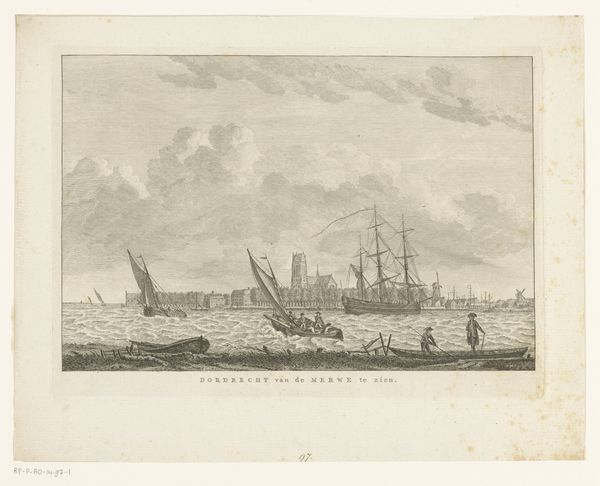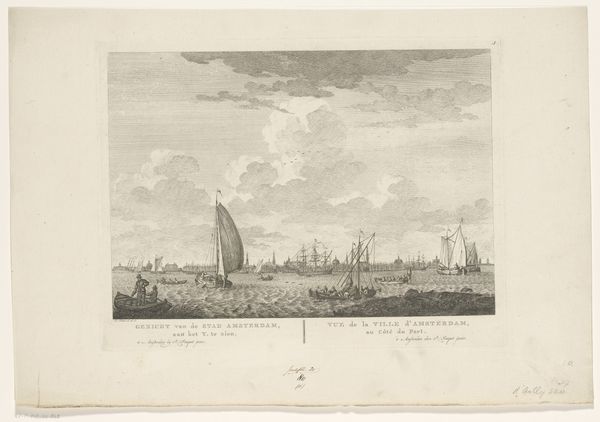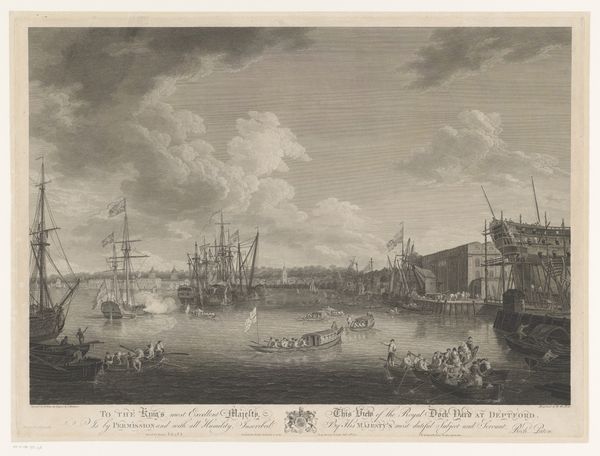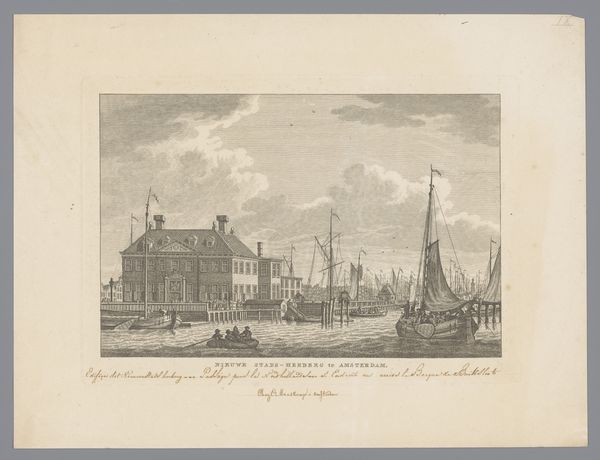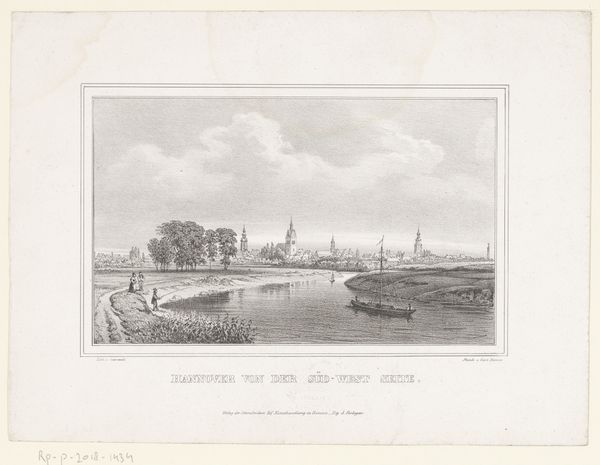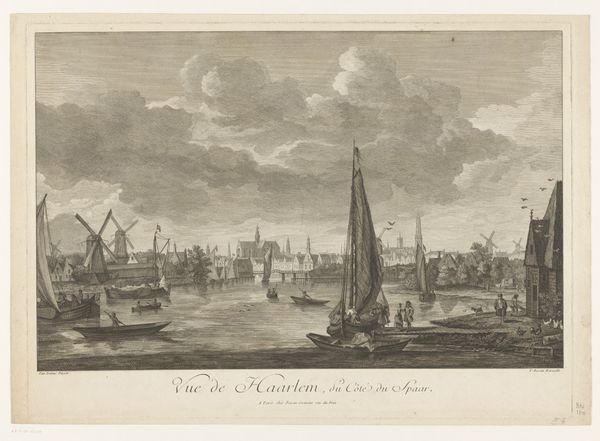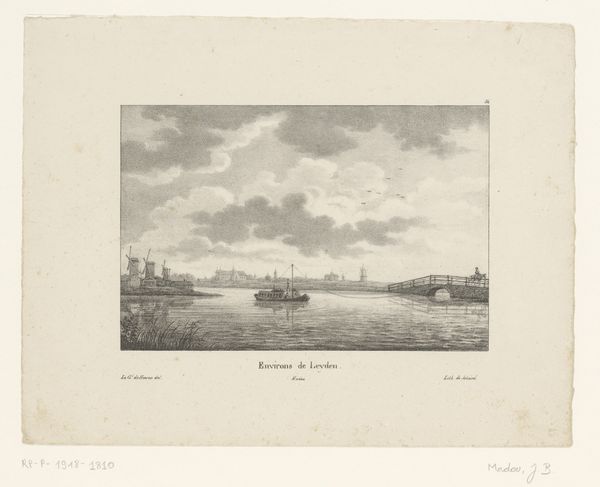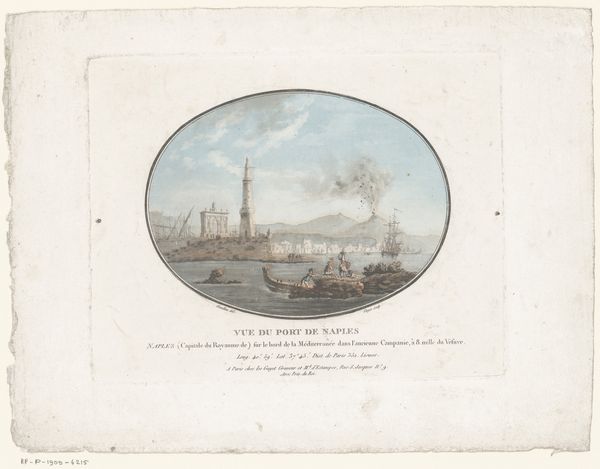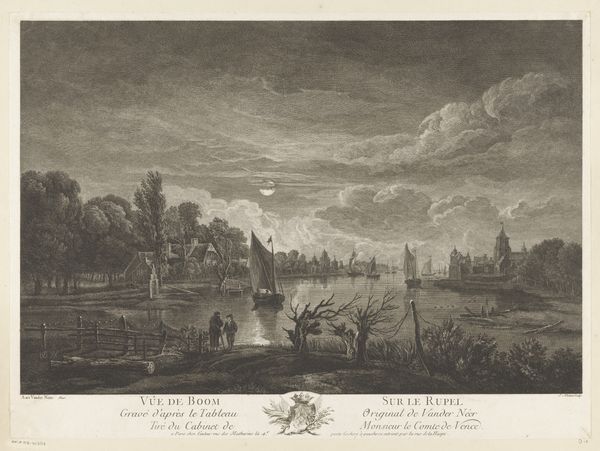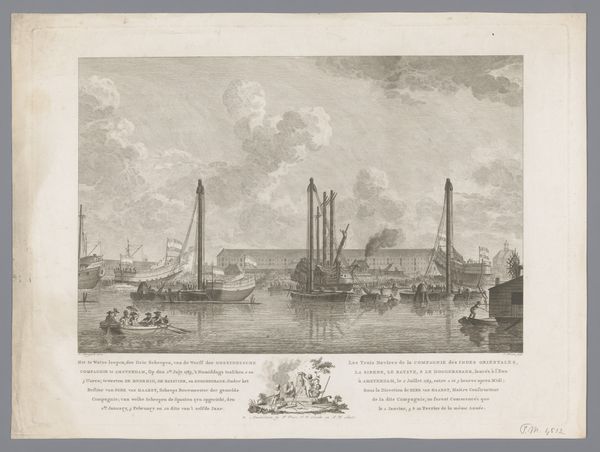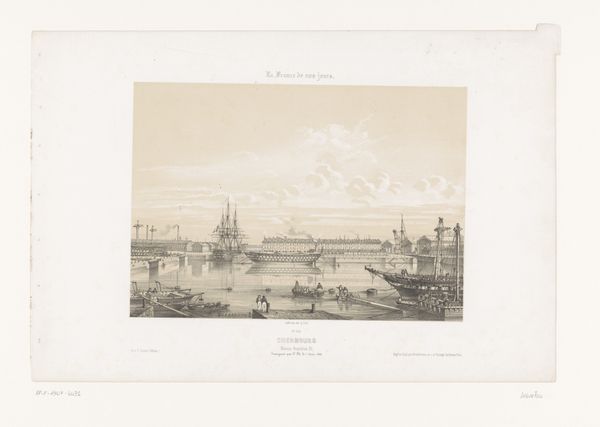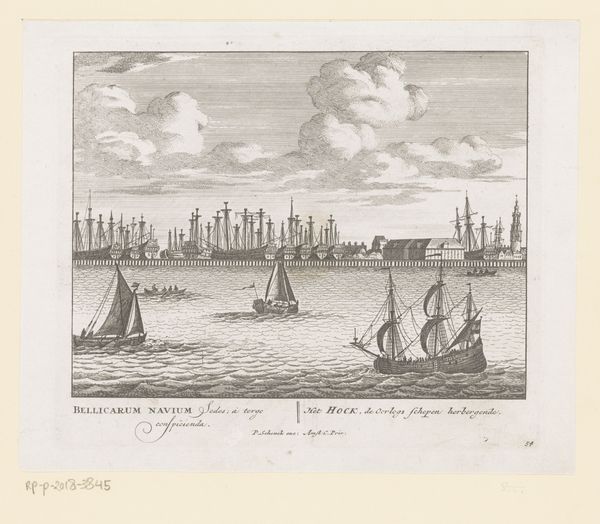
print, etching
# print
#
etching
#
landscape
#
romanticism
#
cityscape
#
history-painting
Dimensions: height 255 mm, width 326 mm
Copyright: Rijks Museum: Open Domain
Curator: Willem van Senus created this etching titled "Gezicht op het Kremlin, te Moskou," or "View of the Kremlin in Moscow," in 1838. The work, rendered in print, showcases the architectural grandeur of the Kremlin complex as seen from across the river. Editor: My immediate impression is of a very controlled, almost staged scene. The monochromatic palette contributes to this formality. It has an atmosphere that feels very deliberate. Curator: The composition relies on precise lines to create depth, guiding the eye from the detailed foreground—complete with human figures—toward the imposing Kremlin in the background. The sharp contrasts delineate each architectural feature, reinforcing a sense of order and classical structure. Note how the heavy use of clouds adds another layer. Editor: But the presence of those people on the docks complicates the scene, doesn't it? While the Kremlin itself embodies power and permanence, the figures are involved in labor, some might even consider exploited labour given the historical context of Tsarist Russia. There is someone working next to two people looking upon him, maybe owners, maybe workers as well. This raises questions about the human cost of imperial ambition and who it impacts directly. Curator: A fair assessment. Formally, these human figures create an intricate rhythm within the print. Their placement enhances the receding perspective and creates a more dynamic interplay of light and shadow, therefore adding vitality to the landscape. Editor: Perhaps the light isn’t simply adding vitality, it illuminates not just the aesthetic composition, but social stratifications inherent in the setting, even subtly drawing attention to class dynamics prevalent at that time and within such systems of oppression. This could also speak to how identities intersect within this landscape. The landscape that reflects the socio-political reality of that time. Curator: While I appreciate your sociopolitical reading, I also value considering how these details interlock structurally to offer an interesting tableau—regardless of what we might project onto it retroactively. We mustn't dismiss the intentional artistic framing that invites the viewer to focus first and foremost on aesthetic impact and execution. Editor: Perhaps in the act of studying those lines, we gain deeper insight into the historical forces at play within this romanticised version of Moscow? Considering the conditions surrounding such projects help us understand power and labor more concretely through the language of aesthetics. Curator: Your observations provide insightful dimensions of contextual understanding that further highlight this cityscape’s multifaceted narrative. Editor: Indeed, the print functions as more than a view; it serves as an archive connecting the present viewer with the past.
Comments
No comments
Be the first to comment and join the conversation on the ultimate creative platform.
